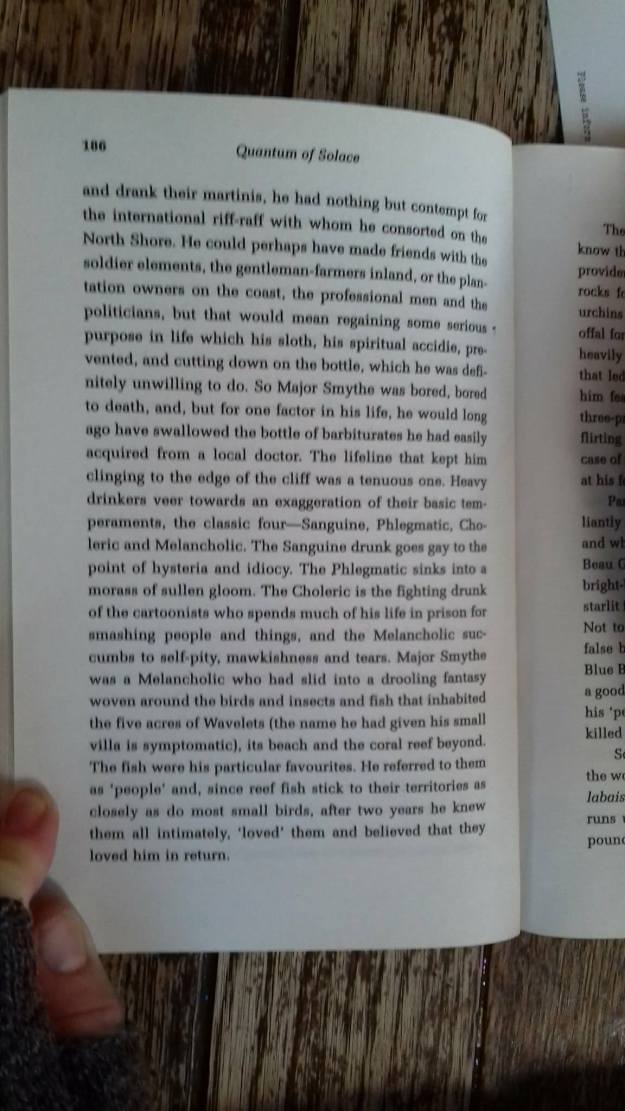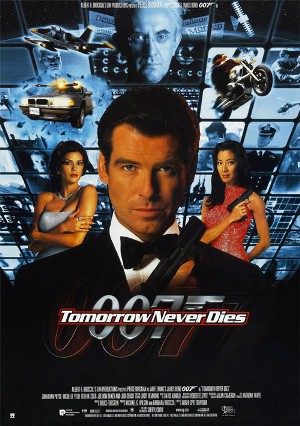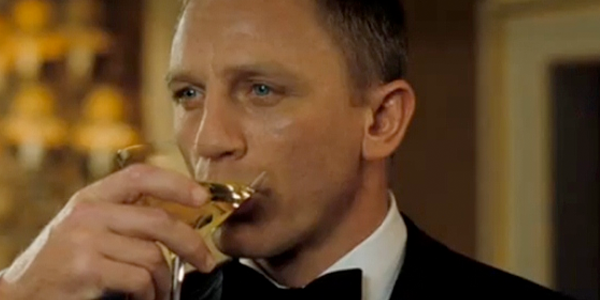
IT SEEMS INCREDIBLE but aside from a comparison made in a Sherlock review, this blog has yet to treat the subject of James Bond, whether the character, the series of novels, or the series of films; all this despite the incredibly exciting announcement made in December about the upcoming film, Spectre, which sees the return of Skyfall director Sam Mendes, boasts an impressive cast list, a ridiculously cool poster, & a title which blatantly announces the return of SPECTRE*, the original evil organisation which served as the villains in six films from 1962 to 1971, & provided the inspiration for Marvel’s HYDRA, G.I. Joe‘s Cobra, DC’s H.I.V.E., The Man from U.N.C.L.E.‘s THRUSH, Get Smart‘s KAOS, & any other acronymic NGO whose political alignment of “evil” handily allows them to play the villains in fantasy espionage plots without real-world political controversy. But SPECTRE, led first by the metal-handed Dr. No, then later the utterly iconic Blofeld, are still the best, with their volcano lairs & spaceship-swallowing spaceships, & to have them back as the baddies is thrilling – even as it causes one to wonder what will become of Quantum, the obvious SPECTRE stand-in created for Quantum of Solace. The need for Eon to use a stand-in for their own favourite villains came about as a result of perhaps the longest legal battle in film history.
In the late 1950s Ian Fleming, with screenwriter Kevin McClory, began work on a screenplay intended to kick off a James Bond film franchise, several years before Eon Productions’ Dr. No. Fleming & McClory together went through a variety of ideas for the story then provisionally known as Longitude 78 West, with McClory also bringing in a third-party collaborator of his own, Jack Whittingham. Fleming, apparently satisfied for the most part with McClory & Whittingham’s script, gave the nascent project the new, more dynamic title Thunderball &, after some light rewriting, began shopping it to studios, without any success. This process of submission seems to have wearied Fleming, as, apparently cynical about Thunderball‘s chances of ever being put into production, he decided instead to rework the script’s plot into a novel, the ninth entry in his series. That novel, published in 1961, stuck closely to the unproduced screenplay, but nowhere credited McClory or Whittingham.
McClory vs Fleming was the first lawsuit of many, with McClory & Whittingham fighting for recognition for their uncredited work. The screenwriters sought not a co-authorship credit, but for the novel’s copyright page to contain an acknowledgement to their screenplay. In 1963, with Eon’s Dr. No & From Russia with Love having already been released to critical & commercial success, McClory & Whittingham won their acknowledgement. As part of the settlement, Fleming was allowed to retain full rights to his Thunderball novel, but McClory – & not, for some reason, Whittingham – retained the rights to any film production of Thunderball, whether that production was based directly on his screenplay, or indirectly on it via Fleming’s novel.
With Eon’s third James Bond film, Goldfinger, already in production, producers Harry Saltzman & Albert R. Broccoli contacted McClory to consider co-producing Thunderball as the fourth film in the series. There was no need, from an artistic perspective, for Thunderball to come next; but from a business perspective, Saltzman & Broccoli feared that McClory might produce his own Thunderball film & release it in competition with the official series, which they would have had no legal means to prevent, & so sought instead to subsume his Thunderball rights into their overall James Bond rights. From McClory’s perspective, moreover, developing a Thunderball film that was an entry in the already popular, big-budget series, starring the popular Sean Connery rather than having to cast a new Bond, must have looked like a safe investment. Eon, therefore, negotiated to lease the Thunderball rights from McClory for ten years. One speculates that Eon must have tried to secure McClory’s film rights in perpetuity; but equally, McClory would have been aware that the rights were by far his greatest asset, & so haggled them down to just a decade’s ownership.
Opening in 1965, Saltzman/Broccoli/McClory’s Thunderball became the most successful Bond film to date, building on the success of the blockbuster formula which had coalesced in 1964’s Goldfinger. Following the film’s success &, more generally, the franchise’s dominance in the 60s & 70s, McClory made various attempts to capitalise on his little piece of Bond, arguing that various elements of the franchise originated in Thunderball & thus could not be used by Eon – or anyone else save the estate of the now-deceased Fleming – without his permission, including SPECTRE & its iconic leader Ernst Stavro Blofeld. Although the film series had, by this point, already included SPECTRE six times – with Bond killing their original leader, Dr. No, in Dr. No, in 1962, then facing underlings of No’s replacement, Blofeld, in 1963’s From Russia with Love & 1965’s Thunderball, & facing off against Blofeld himself in 1967’s You Only Live Twice, 1969’s On Her Majesty’s Secret Service & 1971’s Diamonds Are Forever – McClory won his suit, blocking Eon from any further use of SPECTRE or Blofeld in their films.
Eon clearly intended to return Blofeld after Diamonds Are Forever, with him escaping by personal submarine at that film’s conclusion, and indeed, Eon intended at one point to use Blofeld as the villain in The Spy Who Loved Me, a film which, despite using the title of one of Fleming’s novels, featured an original plot. And Blofeld would have been appropriate as the villain, since the plot about a supertanker eating tankers recalls the spaceship-eating-spaceship from You Only Live Twice. But after discovering that McClory intended to sue if Blofeld was used, Eon instead created a new villain in Karl Stromberg, one of the more forgettable foes in the series.
At this point, if we’re taking the notion of continuity in the Bond canon at all seriously, we must allow an element of fan speculation to creep in: Blofeld’s villainous plans seem to decay in ambition through his three consecutive appearances as antagonist: in You Only Live Twice he brings the United States & USSR to the brink of nuclear destruction; in On Her Majesty’s Secret Service he wishes to ransom the UN into pardoning him, in order to then go legitimate; by Diamonds Are Forever he is hiding in Las Vegas, having stolen the identity of reclusive millionaire Willard White. Presumably the unimaginably immense resources required for a crime syndicate to maintain a space programme not just competitive with, but vastly superior to, those of both the USA & USSR, all the while remaining secret, were more than SPECTRE could afford to lose when Bond foiled their plan, & the organisation seems to have shrunk to the size of a mere personal entourage for Blofeld. By his final appearance in 1981’s For Your Eyes Only, the worst Blofeld can do is to annoy Bond then get unceremoniously killed before the opening credits. With Blofeld underground in Bond’s world from 1971 to 1981, SPECTRE must have collapsed without leadership, leaving revenge on Bond Blofeld’s last recourse.
Of course, the unnamed, uncredited bald, cat-stroking supervillain who appears in For Your Eyes Only is, for legal reasons, “not” Ernst Stavro Blofeld. Unofficially, it’s clear to fans that Eon sought to finally kill Blofeld, partly to provide closure after Diamonds Are Forever‘s frustratingly open ending, partly to allow Bond some emotional catharsis after SPECTRE’s murder of his wife in On Her Majesty’s Secret Service, partly to provide a reassuring continuity link between Connery’s Bond, Lazenby’s Bond, Connery’s Bond again, & Moore’s Bond – the sequence had originally been intended to open Moore’s début, Live and Let Die, but was held off presumably for legal reasons – but mostly to delegitimise the Thunderball remake that producers were aware, by this point, that McClory had managed to get into production, with the Thunderball rights having reverted to him in 1975, per his agreement with Eon in ’65.
Again, McClory must have known that Thunderball was his greatest asset but, having already filmed it once, & not having the legal right to create any Bond films that weren’t Thunderball, his only option was a remake outside of Eon’s continuity: clearly Saltzman & Broccoli would not want to make Thunderball again, but at the same time, the producers probably expected that neither would there be any public or investor interest in an unofficial Bond film that would have to compete with their twelve-films-&-counting juggernaut of a franchise. In all probability, there genuinely wasn’t any public interest in that prospect: Never Say Never Again doesn’t advertise itself as a remake, instead using the return of Connery to the rôle as its big selling point.
Released in 1983 in competition with the official entry Octopussy, Never Say Never Again doggedly copies the successful formula, but without the gun-barrel opening or theme tune it feels a lot like an economy version. Still, Never Say Never Again was competitive at the box office, only narrowly losing to Octopussy, no doubt helped by the asset of definitive 007 Sean Connery, against a tired Roger Moore in Octopussy. In truth, Connery seems equally bored in Never Say Never Again, lured in by filthy lucre & wearing the most expensive wig in film history to hide his age.
At this point, prior to the advent of home video – the current release, incidentally, looks just like the DVDs/Blu-Rays for the official films – McClory lacked the ability to further cash in on the relative success of Never Say Never Again: he legally couldn’t make a sequel, unless it had exactly the same story – & Broccoli, by this point unpartnered from Saltzman, now regarded McClory with hostility, & certainly wouldn’t have let him anywhere near the Eon Productions franchise. Undaunted, McClory put a second remake into production with Sony in 1989. This version was entitled Warhead 2000 A.D., with the intention being to modernise Bond with a dark, realistic tone: unfortunately for McClory, the producers of the official series had already had the same idea that year with Licence to Kill. McClory persisted, and sought as Bond first Pierce Brosnan, who had missed out on replacing Moore in 1987 due to Remington Steele commitments, then in the 1990s, still trying to get the project off the ground, Timothy Dalton, who was still keen on playing the rôle despite Eon’s reluctance to continue with him in the official series. Nothing ever came of the Warhead 2000 A.D. project, though McClory seemed not entirely to have abandoned the idea prior to his death in 2006.
The fifty years of legal conflict finally came to an end in the 2010s after the bankruptcy of Eon’s parent company, MGM. One of the parties in MGM’s subsequent buyout was Sony, & after a brief new round of legal wrangles, Eon Productions was able to acquire all Bond-related elements in 2013, by which point Ian Fleming, Kevin McClory, Jack Whittingham, Harry Saltzman & Albert R. Broccoli were all too dead to care. Still, the happy conclusion to all of this is the appearance, this coming November, of Spectre, returning Bond‘s best baddies to their proper place in the official series. Skyfall may have been the series’ big 50th birthday celebration but, with a legal history going all the way back to 1965’s Thunderball, you could well say that it’s Spectre that’s been 50 years in the making.
*For the record: the SPecial Executive for Counter-intelligence, Terrorism, Revenge and Extortion. The acronym is forced; the films avoid bringing it up.






